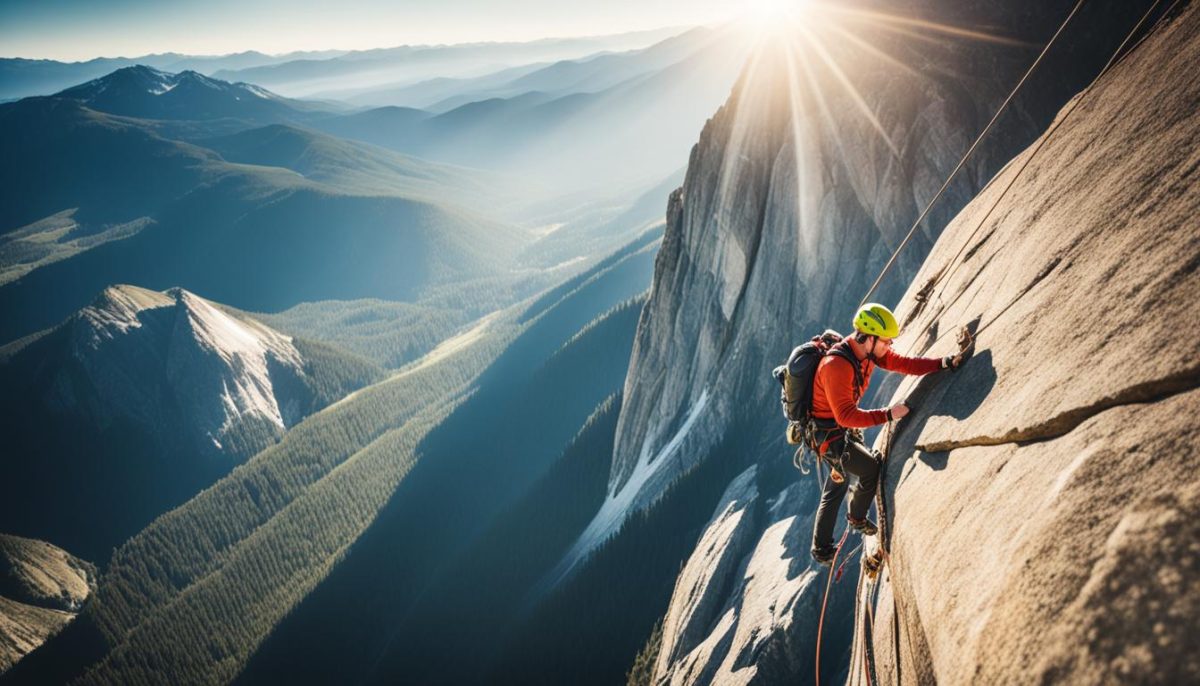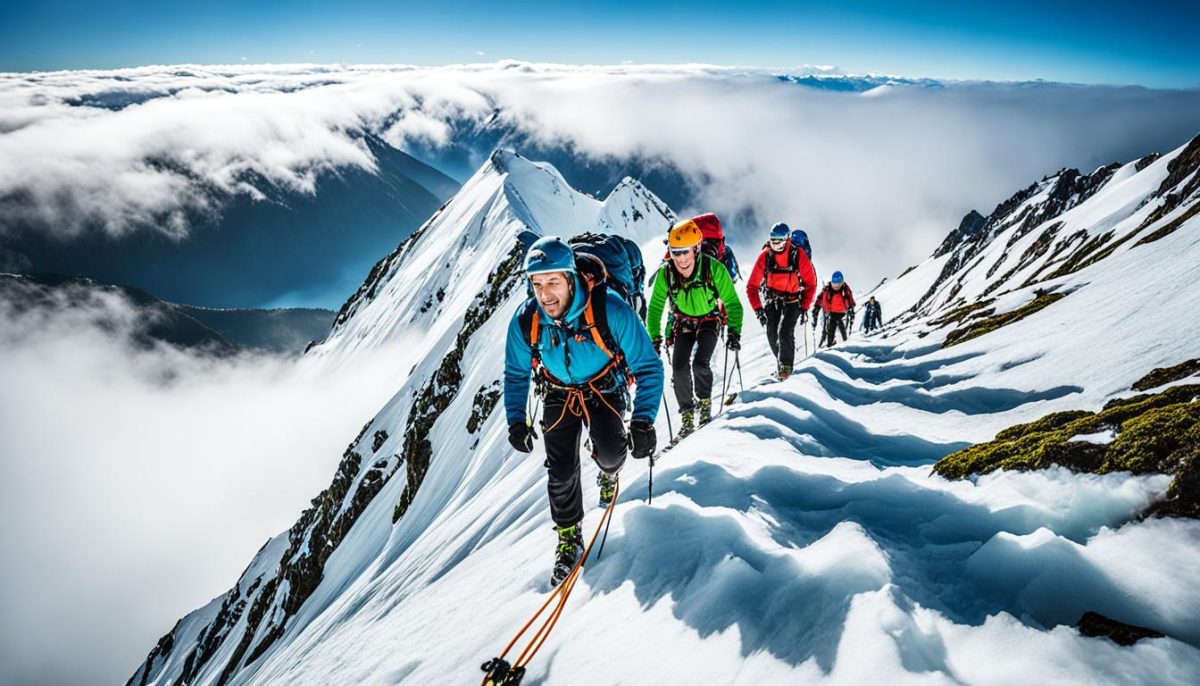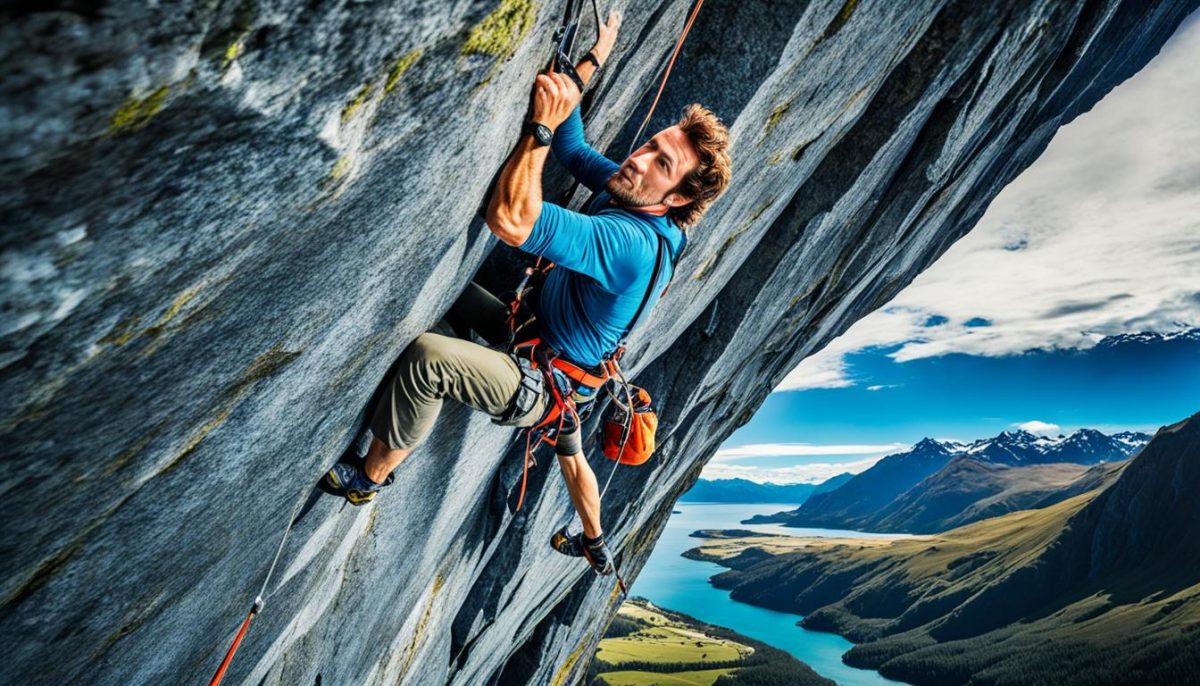Welcome to the thrilling world of climbing! Embarking on a climbing adventure is an exhilarating experience that will test your physical and mental limits.
However, before diving headfirst into this adrenaline-fueled journey, it’s crucial to equip yourself with the necessary knowledge and insights to ensure both your safety and enjoyment during your ascent. In this article, we’ll explore some valuable tips and insights that I wish I had known before taking on the challenge of climbing.
Whether you’re a beginner or an experienced climber, this guide aims to provide you with essential information about climbing, adventure, and safety. So let’s dive in and discover the ropes of this thrilling activity, ensuring you’re well-prepared for the challenges that lie ahead.
Choosing the Right Gear
When it comes to climbing, having the right gear can make all the difference in ensuring a safe and enjoyable experience. Whether you’re a beginner or an experienced climber, investing in the right equipment is essential. In this section, we’ll walk you through the climbing essentials you need to consider before heading out on your next adventure. From climbing shoes and harnesses to ropes and carabiners, we’ve got you covered. So, let’s gear up and get ready to conquer the mountains!
1. Climbing Shoes
Choosing the right pair of climbing shoes is crucial for optimal performance and comfort. Look for shoes that have a snug fit, providing the necessary support and precision for different types of climbs. Whether you prefer lace-up shoes or ones with Velcro straps, find a pair that suits your climbing style and foot shape.
2. Harness
A harness is an essential piece of gear that keeps you secured to the rope during your climb. Look for a harness that fits comfortably around your waist and thighs and offers ample padding for long climbs. Make sure it has adjustable leg loops and a belay loop that allows for easy attachment of your rope and other equipment.
3. Ropes
When it comes to ropes, there are two main types to consider: dynamic and static ropes. Dynamic ropes are designed to absorb the impact of a fall, making them ideal for lead climbing. Static ropes, on the other hand, are used for situations that require low stretch, such as rappelling or setting up anchors. Choose a rope that suits the type of climbing you’ll be doing and ensure it is in good condition and properly maintained.
4. Carabiners
Carabiners are essential for connecting various pieces of climbing equipment and securing yourself to anchors and ropes. Look for carabiners that are lightweight, durable, and easy to use. You’ll need both locking and non-locking carabiners, depending on the specific tasks and maneuvers you’ll be performing during your climb.
5. Helmet
Safety should always be a top priority when climbing, and wearing a helmet can protect your head from falling rocks or accidental impacts. Look for a helmet that fits securely and comfortably and meets safety standards. Make sure it provides ample coverage and has proper ventilation to keep you cool during your climb.
6. Climbing Gear Bag
To keep all your gear organized and easily accessible, invest in a quality climbing gear bag. Look for a bag that is spacious, durable, and has multiple compartments to separate your gear. This will ensure that you can easily find what you need when you’re out on the rock face.
| Item | Description |
|---|---|
| Climbing Shoes | Snug-fitting shoes for precision and support |
| Harness | Keeps you secure and comfortable on the rope |
| Ropes | Dynamic or static ropes for different climbing situations |
| Carabiners | Connects equipment and secures climbers to ropes |
| Helmet | Protects your head from falling rocks and impacts |
| Climbing Gear Bag | Organizes and stores all your climbing equipment |
Understanding the Importance of Training
Climbing is an exhilarating sport that demands more than just a sense of adventure. It requires physical strength, agility, and technical skills to conquer nature’s challenges. Whether you’re a novice climber or have some experience under your belt, investing time and effort in training and physical preparation is essential for a successful ascent.
Training not only helps you build the necessary strength and endurance but also improves your overall climbing technique. By focusing on specific muscle groups used in climbing, such as the arms, core, and legs, you can develop the required physical capabilities to face various climbing terrains and situations.
One important aspect of training is engaging in exercises that mimic climbing movements. These can include pull-ups, push-ups, planks, squats, and wall climbs. Incorporating cardiovascular exercises, such as hiking or running, can also improve your endurance and stamina, allowing you to tackle longer climbs with greater ease.
In addition to physical training, it’s crucial to enhance your climbing technique through practice and guidance. Learning proper footwork, hand placement, and body positioning can significantly improve your climbing efficiency and minimize the risk of injury. Working with experienced climbers or hiring a professional climbing instructor can provide valuable insights and guidance on technique enhancement.
Remember, climbing is a sport that requires constant learning and adaptation. Exploring new climbing techniques, studying different climbing styles, and staying up-to-date with industry advancements can help you develop a well-rounded skillset and improve your climbing abilities over time. Ultimately, the more you invest in training and technique refinement, the more enjoyable and fulfilling your climbing experiences will be.
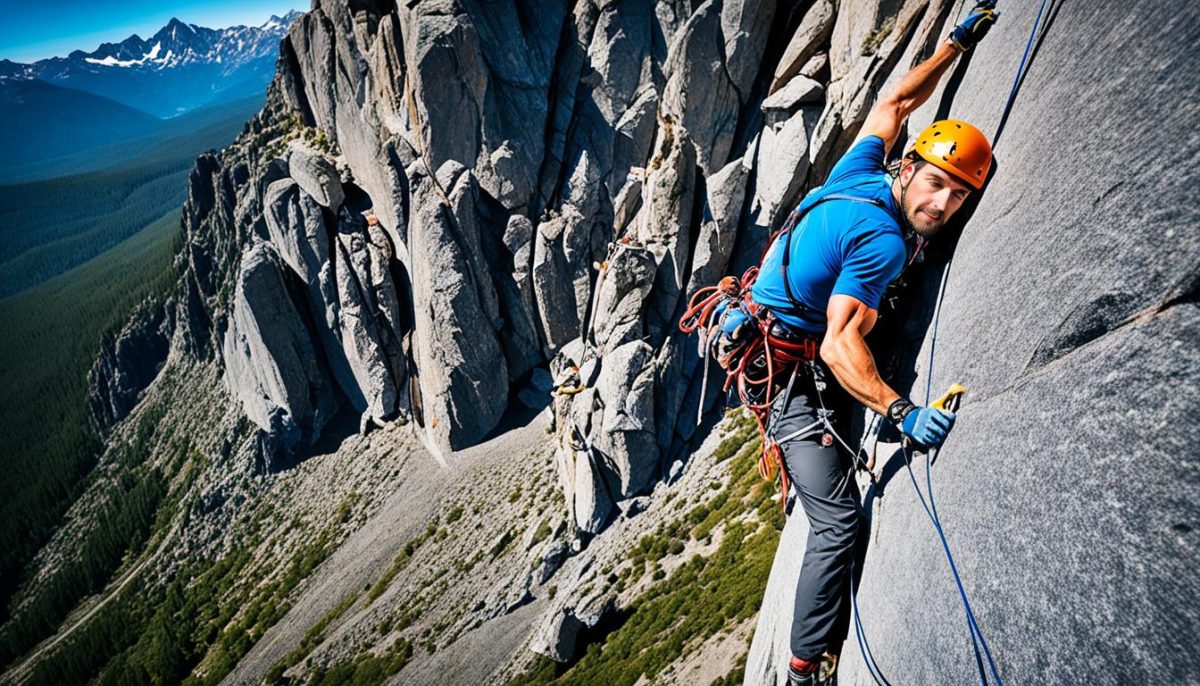
Benefits of Training and Preparation:
- Enhancement of physical strength and endurance
- Improvement of climbing technique and efficiency
- Prevention of injuries through proper muscle conditioning
- Increased stamina for long and challenging climbs
- Development of a well-rounded skillset for various climbing styles
Navigating Different Climbing Environments
When it comes to climbing, there are two main environments to consider: outdoor natural settings and indoor climbing gyms. Each offers its own unique challenges and opportunities for climbers of all levels. Understanding the distinctions between outdoor and indoor climbing is essential for adapting to different conditions and making informed decisions during your climb.
The Great Outdoors: Outdoor Climbing
Outdoor climbing allows you to connect with nature while testing your skills and pushing your limits. Whether you’re scaling majestic rock formations or tackling challenging mountain faces, outdoor climbing offers a thrilling adventure like no other.
Here are a few key aspects of outdoor climbing to consider:
- Climbing Environments: Outdoor climbing provides diverse landscapes and rock formations, such as granite cliffs, limestone crags, and sandstone towers. Each environment presents its own unique challenges and requires specific techniques and gear.
- Weather Conditions: Unlike indoor climbing, outdoor climbing is subject to weather conditions like rain, wind, and extreme temperatures. It’s crucial to check the forecast and plan your climb accordingly.
- Route Finding: Outdoor climbing often requires route finding skills to locate the best paths up the rock. Guidebooks, online resources, or experienced climbers can help you navigate the intricacies of outdoor climbing routes.
To excel in outdoor climbing, it’s important to prioritize safety by understanding equipment, practicing climbing techniques, and learning proper rescue protocols. Additionally, respecting the natural environment and adhering to Leave No Trace principles ensures the preservation of climbing areas for future generations.
Indoor Climbing: A Controlled Environment
If you’re looking for a more controlled and accessible climbing experience, indoor climbing gyms provide an excellent alternative. These purpose-built facilities offer a wide range of climbing walls and routes designed to simulate different outdoor climbing environments.
Here are a few advantages of indoor climbing:
- Consistent Conditions: Indoor climbing allows you to train and practice in a controlled, climate-controlled setting. This consistency enables you to focus on refining your techniques without worrying about external factors like weather.
- Structured Learning: Indoor climbing gyms often provide classes and coaching opportunities for climbers of all levels. These resources can help you develop and improve your climbing skills under the guidance of experienced instructors.
- Social Community: Indoor climbing gyms foster a vibrant community of climbers who share a passion for the sport. Engaging with this community can provide valuable support, motivation, and camaraderie in your climbing journey.
While indoor climbing may not offer the same natural beauty and raw wilderness as outdoor climbing, it serves as an invaluable training ground for honing your skills before venturing into more challenging outdoor terrains.
Summary: Adapting and Thriving in Different Climbing Environments
Whether you choose to climb in the great outdoors or at an indoor gym, each environment provides its own set of benefits and considerations. Outdoor climbing offers an exhilarating experience in natural settings, pushing your mental and physical limits. Indoor climbing, on the other hand, provides a controlled and supportive environment for training and skill development.
By understanding the distinctions between outdoor and indoor climbing environments, you can adapt your approach, choose the appropriate gear, and make the most of your climbing experiences. Remember, climbing is a journey that offers endless opportunities for growth, challenge, and connection with both nature and fellow climbers.
| Outdoor Climbing | Indoor Climbing |
|---|---|
| Varied landscapes and rock formations | Controlled and consistent conditions |
| Weather-dependent | Climate-controlled environment |
| Route finding skills required | Structured learning opportunities |
| Emphasis on safety and rescue protocols | Supportive climbing community |
Mental Preparedness and Safety Measures
Climbing involves inherent risks, and mental preparedness plays a crucial role in ensuring a safe and enjoyable experience. Developing the right mindset and implementing effective risk management strategies are key to overcoming challenges on the climb.
Building Mental Fortitude
To be mentally prepared for climbing, it is essential to cultivate a positive attitude and mindset. Visualize success, set achievable goals, and maintain a strong belief in your abilities. Embrace a growth mindset that allows for continuous learning and improvement.
“Your attitude, not your aptitude, will determine your altitude.” – Zig Ziglar
In addition, managing fear and anxiety is paramount. Recognize that fear is a natural response but learn to control it rather than letting it control you. Breathing exercises and visualization techniques can help in reducing anxiety and building confidence.
Effective Risk Management
Risk management is a critical aspect of climbing safety. By understanding and assessing potential risks, climbers can make informed decisions and minimize the likelihood of accidents.
One of the key safety measures is proper communication. Establish clear and concise communication protocols with climbing partners. This ensures that everyone is on the same page regarding route selection, equipment usage, and emergency procedures.
Teamwork is another vital component of climbing safety. Foster a supportive and collaborative environment where climbers can rely on each other and work together to mitigate risks. Regularly check and double-check each other’s gear, knots, and safety systems.
Having thorough knowledge of emergency procedures is crucial. Familiarize yourself with first aid techniques and response protocols for common climbing injuries. Carry a well-stocked first aid kit and practice scenarios to ensure readiness in case of emergencies.
Climbing Safety Checklist:
- Double-check all gear and equipment before each climb.
- Research and understand the climbing route and its potential hazards.
- Stay updated on weather conditions and adjust plans accordingly.
- Always use proper protective gear, including helmets and harnesses.
- Stay hydrated and nourished throughout the climb.
- Know your limitations and don’t push beyond your skill level.
- Listen to your body and rest when necessary.
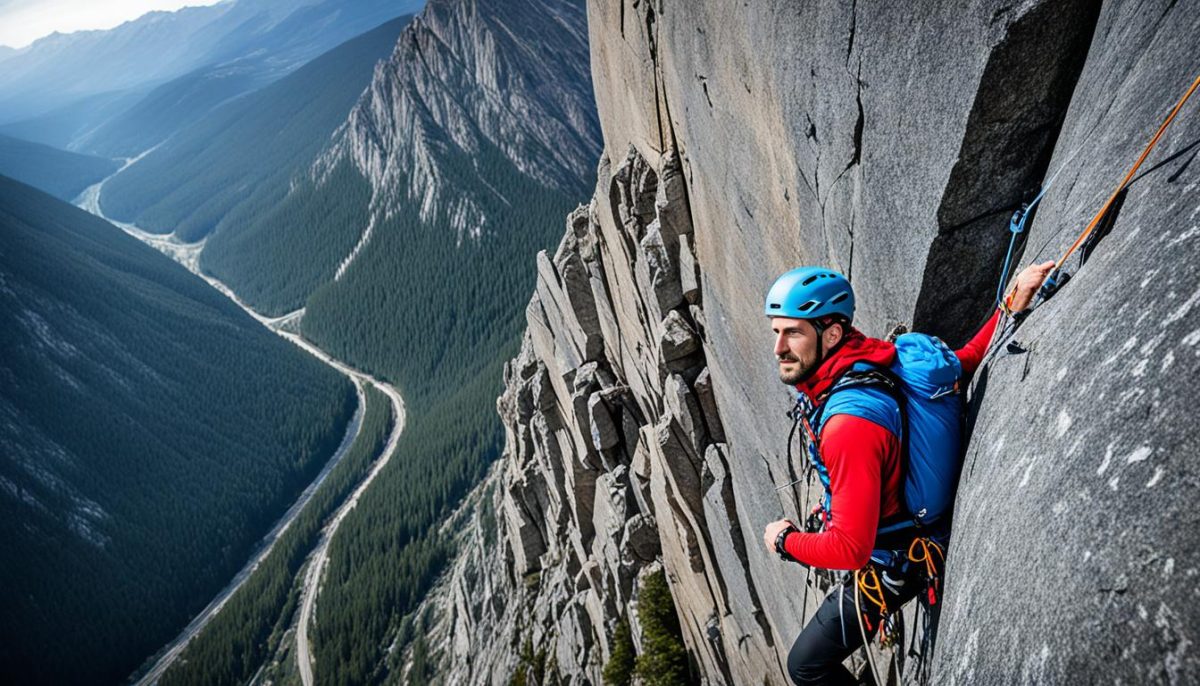
Remember: Safety First!
By prioritizing mental preparedness and implementing effective safety measures, climbers can minimize risks and enjoy the thrill of climbing with confidence. Stay informed, train diligently, and always prioritize safety for a successful and rewarding climbing experience.
| Risk Management Principles | Examples |
|---|---|
| Identify and assess risks | Researching the climbing route and potential hazards |
| Communicate effectively | Establishing clear communication with climbing partners |
| Practice teamwork | Double-checking gear and safety systems with climbing partners |
| Be prepared for emergencies | Carrying a well-stocked first aid kit and knowing first aid techniques |
Engaging with the Climbing Community
The climbing community is a vibrant and supportive network of climbers who share a common passion for this exhilarating sport. Whether you’re a beginner or an experienced climber, engaging with the climbing community can provide numerous benefits to enhance your climbing journey.
One of the key advantages of joining the climbing community is the wealth of knowledge and expertise available. By connecting with experienced climbers, you can gain valuable insights, learn new techniques, and discover hidden gems in climbing destinations. The climbing community serves as a valuable resource, offering advice and guidance to climbers of all levels.
Online platforms, such as forums and social media groups, provide opportunities to connect with climbers from around the world. These virtual spaces allow you to ask questions, share your experiences, and seek advice from a diverse range of climbers. Engaging with the climbing community online can be particularly beneficial if you don’t have immediate access to experienced climbers in your local area.
Offline, joining local climbing clubs or organizations offers opportunities for face-to-face interactions and building meaningful connections. Participating in group climbing sessions, workshops, and events can help you establish a strong support system within the climbing community. By surrounding yourself with fellow climbers, you’ll have access to a network of like-minded individuals who can provide encouragement, motivation, and safety tips.
Furthermore, the climbing community offers valuable learning opportunities. Climbing partners and mentors can share their expertise, teach you new techniques, and help you improve your climbing skills. Taking part in workshops and training sessions organized by the climbing community can also enhance your knowledge and abilities. By continuously engaging with the climbing community, you’ll have the chance to learn and grow as a climber.
“The climbing community has been an incredible source of support and inspiration for me. Through their guidance and encouragement, I’ve been able to push my limits and achieve personal goals I never thought possible.” – Sarah Johnson, avid climber
Lastly, the climbing community fosters a sense of belonging and camaraderie. Being part of a supportive community can make your climbing experiences more enjoyable and fulfilling. You’ll have the opportunity to share your triumphs and challenges with fellow climbers who understand and appreciate the complexities of this sport. The camaraderie within the climbing community creates a positive and motivating environment that can elevate your climbing journey to new heights.
Benefits of Engaging with the Climbing Community
| Benefits | Description |
|---|---|
| Access to Knowledge | Gain insights, learn new techniques, and discover climbing destinations. |
| Virtual Support | Connect with climbers worldwide through online platforms for advice and guidance. |
| Face-to-Face Interactions | Join local climbing clubs and organizations to build meaningful connections and receive in-person support. |
| Learning Opportunities | Learn from experienced climbers through workshops, training sessions, and mentorship. |
| Sense of Belonging | Experience the camaraderie and support of like-minded individuals who share your passion for climbing. |
Respect for Nature and Leave No Trace Principles
Climbing is a thrilling adventure that often takes us into the heart of nature. As climbers, it is our responsibility to preserve and protect the natural environments we encounter. Nature conservation and Leave No Trace principles should be at the forefront of our climbing practices, ensuring minimal environmental impact.
By following Leave No Trace, we can minimize our footprint and help maintain the delicate balance of these ecosystems. First and foremost, we must strive to leave the climbing areas in the same or better condition than when we found them. This means properly disposing of waste, including food wrappers and climbing tape, and packing out everything that we brought in.
Preserving wildlife habitats is also paramount. We should respect nesting areas and refrain from disturbing or feeding wildlife. Staying on designated trails and paths helps protect fragile vegetation and prevents erosion. By being mindful of our surroundings, we can contribute to the longevity and sustainability of these natural spaces.
Let us remember that as climbers, we have the power to make a positive impact on the environment. By embracing Leave No Trace principles and promoting nature conservation in our climbing practices, we can ensure that these breathtaking landscapes continue to inspire generations of climbers to come.

